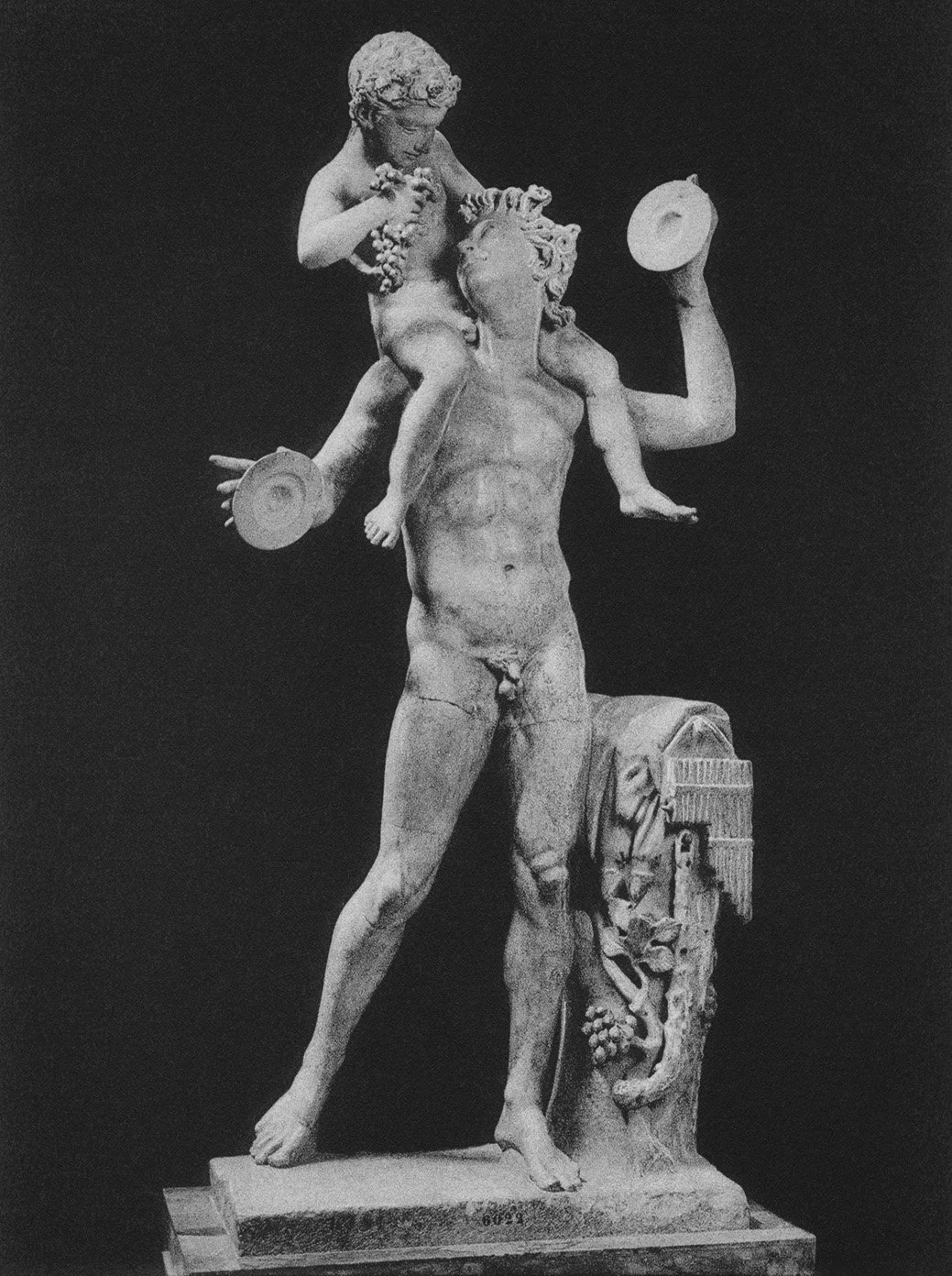SatYR WITH YOUNG BACCHUS
(After the antique)
Italian, late 18th century
Bronze
29 cm high
£6, 750


This model is a reduced bronze version of the famous ancient marble Satyr with young Bacchus that was formerly in the Farnese collection and now in the Museo Nazionale in Naples (inv. 6022). In the 16th century the statue formed part of the collection of antiquities of the Cesarini family, a prominent Roman aristocratic family, who - in a fashion not uncommon at the time - traced their lineage to no less than Julius Caesar (M. de Montaigne, Journal de Voyage en Italie, Paris, 1580-81, pp. 275-276). In 1593 Cardinal Odoardo Farnese acquired the Satyr with young Bacchus from Duke Giuliano IV Cesarini, along with the rest of the collection.
The theme of Bacchus's childhood, spent on the hills of mount Nysa in the company of satyrs and maenads, had enjoyed significant popularity since antiquity, as testified above all by the famous Hermes and the infant Dionysus group attributed to Praxiteles (4th century BC, now Archaeological Museum, Olympia, Greece). The present bronze depicts a satyr playing cymbals whilst the infant Bacchus sits on his shoulders holding a bunch of grapes.
This lively scene captures a seminal event in the life of the young god, for this is the moment when he is first introduced to the fruits of the vine. In the ancient world, many different cultures throughout Europe and Asia Minor established cults of Bacchus, centred on festivals such as the Athenian Dionysia and Lenaia, in which musical instruments like the cymbals and panpipe represented here played a key role.
